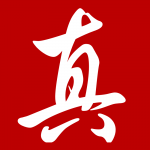The following censorship instructions, issued to the media by government authorities, have been leaked and distributed online. The name of the issuing body has been omitted to protect the source.
Japanese premier Abe Shinzo will pay an official visit to China from October 25 to 27. Successfully receiving this visit by Abe is of great significance to the improvement of Sino-Japanese relations. All websites please quietly handle sensitive topics to avoid disturbing the overall positive mood of the bilateral relationship. Play down the two sides’ conflicting views and disagreements, and do not overinterpret information released by the Japanese side about a possible visit by the state chairman [Xi Jinping] to Japan. Media should vigorously report in accordance with official declarations. Do not draw direct links between Sino-U.S. and Sino-Japanese relations, and prevent the appearance of clickbait and hot takes about “embracing Japan to resist America.”
(October 23, 2018) [Chinese]
Abe’s visit last month was hailed by both sides as a historic turning point in bilateral relations. The visit did produce a currency swap agreement and billions of dollars of third-country infrastructure cooperation agreements, as well as crisis management and diplomatic consultation agreements in the East China Sea. It also saw the announcement of the end of Japan’s 40-year, $30+ billion aid program to China, a symbolic departure from the two countries’ post-war relationship to date. Such symbolism, most commentators appear to agree, outweighed the occasion’s concrete results, and the pragmatic rapprochement in the face of greater unpredictability from the U.S. is not widely expected to substantially address the deep lingering differences between the two countries.
South China Morning Post’s Cary Huang summed up the visit’s fraught context in terms of China and Japan’s relationships with each other and with the United States, and predicted that the two East Asian powers “will continue to be frenemies”:
The recent thaw in bilateral ties between the Asian giants would have seemed impossible just a few years ago after Tokyo “nationalised” a group of disputed islands in the East China Sea in 2012, sparking government-sanctioned anti-Japanese riots across China and kicking off a chill in bilateral relations.
[…] No foreign leader in recent memory has ever received harsher rebukes from the Chinese media than Abe, who was called a “political hooligan” and the “most unwelcome” foreign leader. Abe’s China trip last week was the first by a Japanese prime minister since 2011.
It is obvious that the sudden chill in US-China relations and US President Donald Trump’s trade war have made closer relations between Asia’s chief rivals a reality. The world’s second- and third-largest economies are eager to push closer economic cooperation as they prepare to weather the Trump administration’s punitive trade measures. China is eager to attract Japanese investment and technology, and Japan is keen on increased access to China’s massive market.
[…] While Abe’s visit might mark a significant improvement in ties, it does not signal a return to the state of relations before the escalation of the Diaoyu Islands dispute in 2012 or to their heyday between the 1980s and mid-1990s. As a direct participant in a turbulent US-China relationship, Tokyo will not befriend a frenemy at the risk of upsetting its most trustworthy ally. [Source]
Read more on the tangled triangle from Jonathan D. Pollack at Brookings.
At Nikkei, Ritsumeikan Asia Pacific University’s Yoichiro Sato gave his own analysis of Sino-Japanese “Cold Thaw,” calling it “at best, a halfhearted suspension of a long-term feud” which “is most unlikely to prove a historic turning point”:
China has a great interest in splitting the U.S.-Japan alliance. However, Beijing does not seriously believe it can drive an effective wedge between Tokyo and Washington over security. So, it is instead focusing on economic ties — and betting Japan will see that interests are so intertwined with China that Abe will try to limit the economic damage of Trump’s trade war.
[…] Japan has tried to diversify its investment destination after anti-Japanese riots in Chinese cities in 2012 following the government’s purchase from a private owner of the disputed Senkaku Islands, which are claimed by China. But this diversification drive has not seriously reduced Japanese exposure to China’s possible economic and social disruptions. So, the U.S.-China trade war puts Japanese companies at grave commercial risk, compounded by the impact of a possible yuan plunge, and the danger of the destruction of Japanese property in the event of more riots.
[…] All Tokyo can hope for in its current bilateral talks with Beijing are a few pragmatic gains from modestly reduced tariffs in China. In theory, the fact that Japan is now in trade negotiations with Beijing — albeit with South Korea in a trilateral process — should deter the U.S. from making overly unreasonable demands of Tokyo. But in practice, Japan cannot play the China card without enraging Trump. The fact that Abe’s Beijing trip did not bring any commitments to an early conclusion of the negotiation with China and South Korea shows how modest are the Japanese prime minister’s options.
[…] For Xi, it was important to be able to tell the domestic audience that it was Abe who blinked first in the bilateral freeze — by coming to Beijing. But the Chinese president did not respond with the gesture that Tokyo has long awaited — and accept a long-standing Japanese invitation to Tokyo. His answer to Abe was an uncommittal “seriously consider.” [Source]
In an op-ed at The Washington Post, the Tokyo-based Asia Pacific Initiative’s Yoichi Funabashi urged the Japanese government to “ponder the risks of closer ties with China”:
This is a step in the right direction but there are certainly risks to Japan’s foreign policy. One is that Japan may be perceived as caving in to China. After opposing China’s land reclamation and military build-up in the East China Sea and South China Sea, as well as abstaining from the Asian Investment Infrastructure Bank, a Chinese-led development bank, on grounds of being a tool for Chinese economic statecraft, the strategic change of heart may reek of opportunism. If Japan is perceived by smaller Asian nations to be ceding to China, they could possibly do the same.
A second risk for Tokyo is that the meeting could be seen by Washington and the rest of Asia as a hedging strategy — an “insurance” policy, as put by a Chinese think tank delegation to Tokyo in April. Japan cannot afford to see any gains in its relationship with China become a wedge in its alliance with the United States.
[…] One thing is certain: Abe is determined to avoid the biggest toll of all – lasting damage to the U.S.-Japan alliance. The Japanese Ministry of Defense’s announcement on the inclusion of a submarine in military drills in the South China Sea is a timely signal that Japan will make no negative changes to the alliance and will do its part to uphold the rules-based order. Vice President Pence’s castigation of Chinese economic aggression and interference in American politics, which smacked of Winston Churchill’s 1946 Iron Curtain speech, did not fall on deaf ears in Tokyo.
If Abe can afford to reach normalization with China, it’s because of the lengths to which he has gone to strengthen the U.S.-Japan alliance. Even as he meets with Xi, Abe needs no reminder that Japan’s greatest long-term challenge is China. [Source]
At South China Morning Post, Shi Jiangtao gathered more generally cautious expert views on the meeting’s significance and prospects for bilateral relations.









